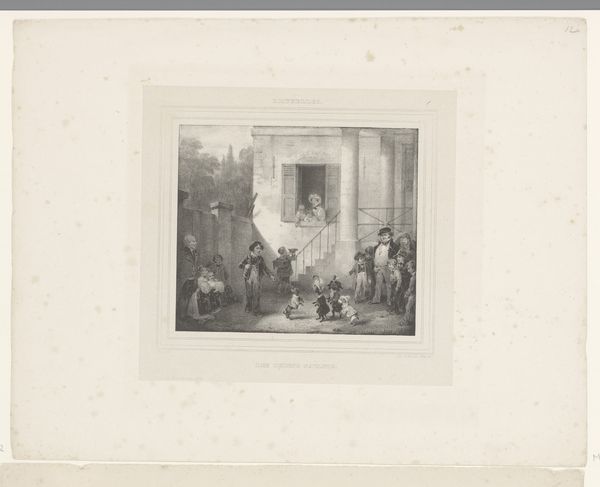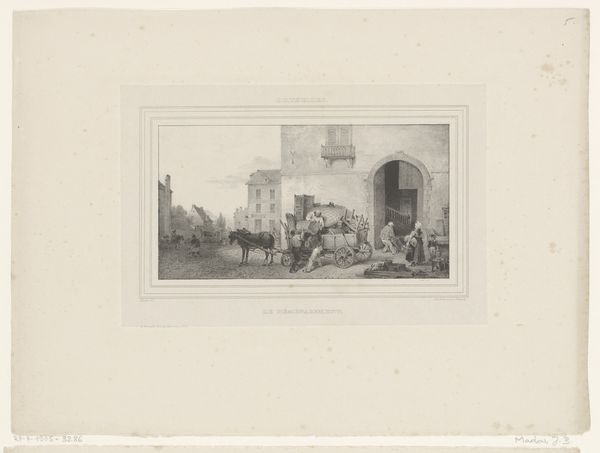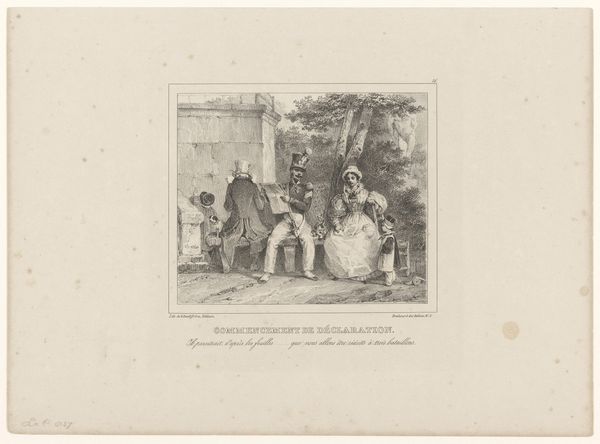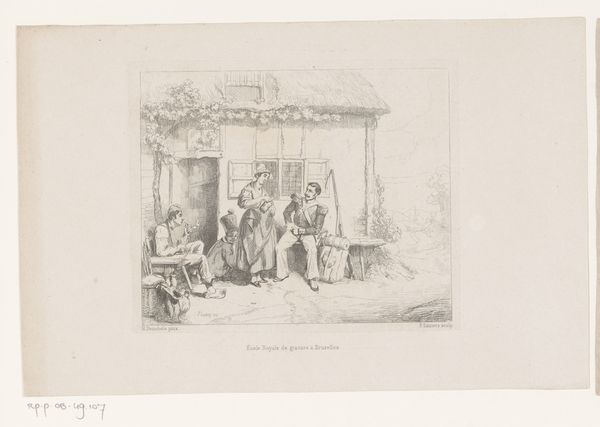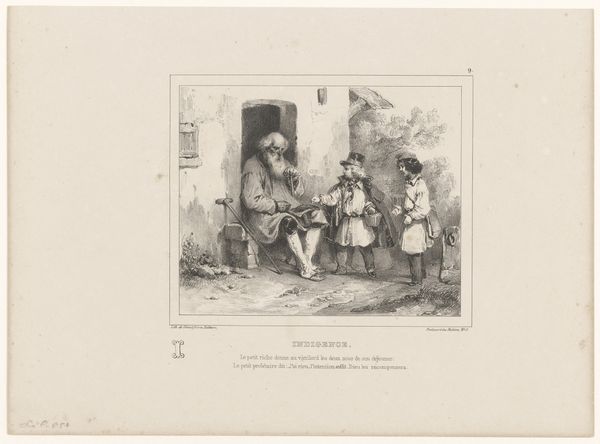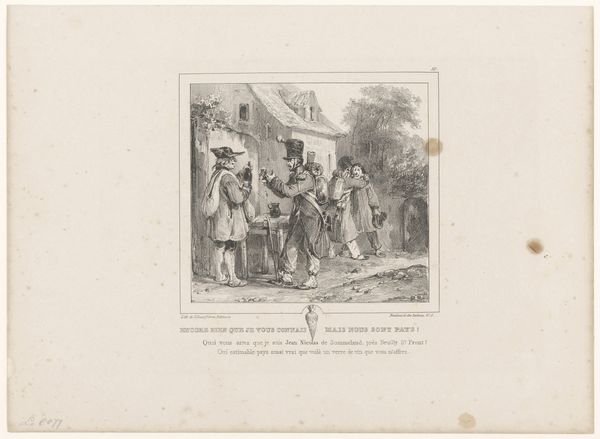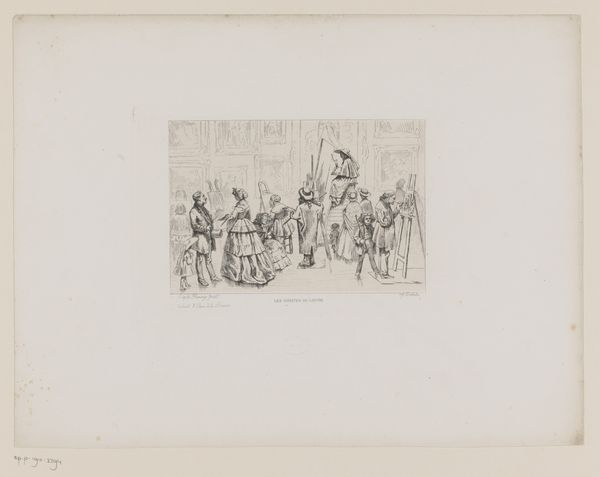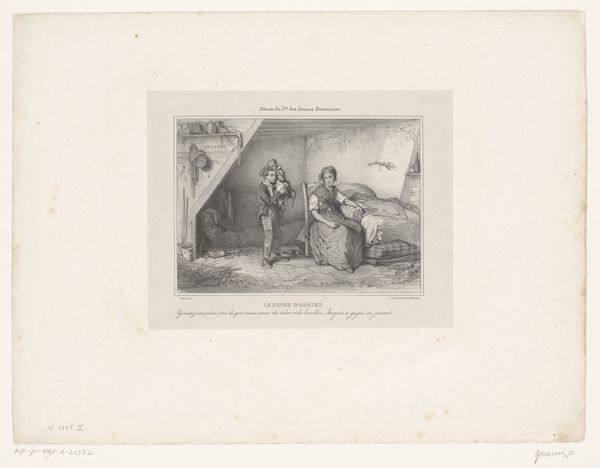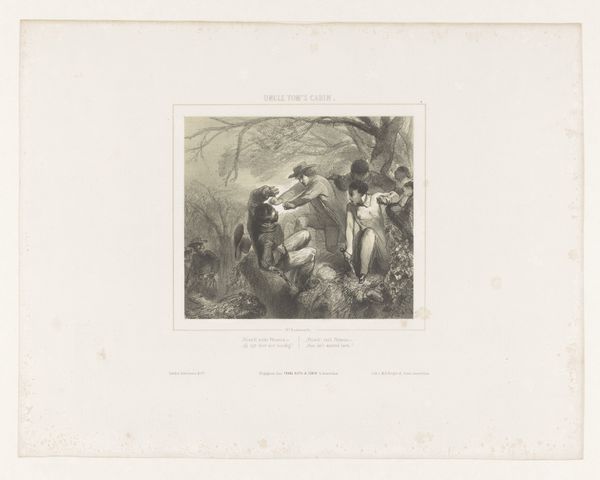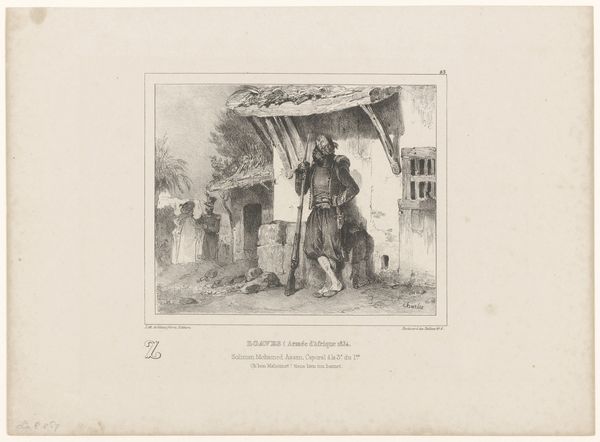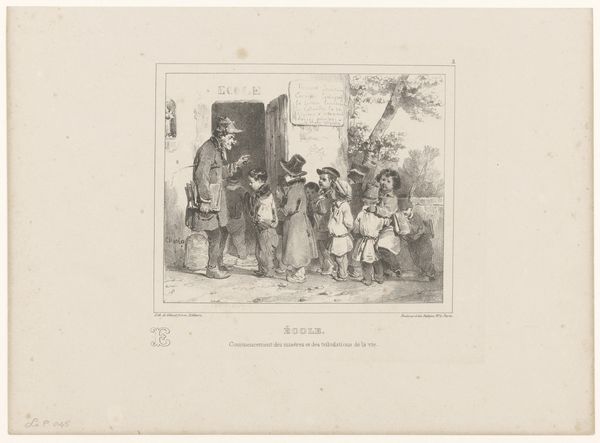
drawing, print, paper, pencil
#
portrait
#
pencil drawn
#
drawing
#
light pencil work
#
narrative-art
# print
#
pencil sketch
#
paper
#
child
#
romanticism
#
pencil
#
pencil work
#
genre-painting
Dimensions: height 243 mm, width 317 mm
Copyright: Rijks Museum: Open Domain
Curator: Here we have "Six Children Playing Soldiers," a print made by Nicolas Toussaint Charlet around 1837. What leaps out at you about this piece? Editor: Immediately, there's a fragility in the pencil work itself—almost a whisper of war, a child’s fantasy played out with charcoal smudges and the barest suggestions of form. It’s tentative. Curator: Absolutely, a fragile fantasy. You see the rudimentary 'weapons,' the cobbled-together costumes. Consider the paper and pencil, readily available, affordable – tools of democratic expression during a time of considerable social change. Editor: Exactly. The accessibility of printmaking allowed images like these to circulate widely, shaping popular notions of patriotism, childhood, and even the glorification of military life for a broad audience. The child dressed up at the first of the line in dark pencil tone inspires in the viewer ideas about identity, maybe also role model. Curator: It is fascinating, isn’t it, the way the ‘materials’ shape the narrative. And yet, something about their game feels innocent despite its subject, don't you agree? Perhaps a world viewed through younger, more naive eyes. Editor: Well, childhood "innocence" is a loaded term. Think of what they might be internalizing: Power structures, the valorization of conflict. Even the *act* of mimicking soldiers normalizes it. The medium lends to the theme, like paper lends itself to war orders or communiques from far away locations, brought back home. Curator: That is a really relevant perspective, and indeed gives pause to how social messaging may be shaped at early age through imitation, play. Almost as if their small bodies serve as malleable instruments, open for indoctrination. But maybe Charlet also wanted us to question such militaristic ambition, showing war through the imaginative space of a child? Editor: That's an interesting proposal; to imagine him suggesting his audience reflect. He shows children playing but in playing they reflect the zeitgeist that affects every part of daily life, in his use of pencil on paper that is replicated and consumed by a society hungry for art, culture, entertainment, or propaganda. Curator: Well, it's a work that resonates on multiple levels, layers like pencil marks. Each reveals new depths depending on how you are looking. It's good to know there are works here, where both adults and children can still engage. Editor: It makes one ponder the materials in front of us every day, too. How they become imbued with stories, with messages. The everyday and seemingly insignificant is very rarely without some type of societal undertone.
Comments
No comments
Be the first to comment and join the conversation on the ultimate creative platform.
